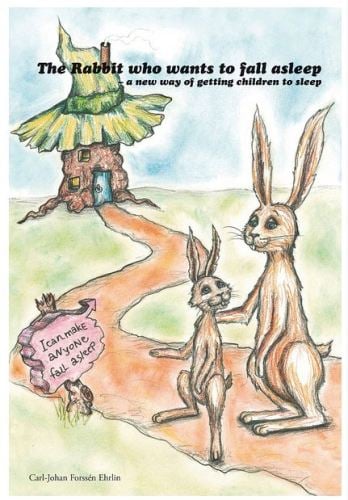The new book that makes children fall asleep quickly
Posted on
The Book that helps children fall asleep quickly.
The Rabbit Who Wants To Fall Asleep by Carl-Johan Forssen Ehrlinhas been taking the world of tired parents by storm. But How does the rabbit who wants to fall asleep work? Is it hypnosis for children?
It is reported that it uses psychological techniques to send children to sleep quickly but what is it really doing?
The Rabbit Who Wants To Fall Asleep, has been created by Swedish behavioural psychologist and linguist Carl-Johan Forssen Ehrlin and is currently outselling Harper Lee’s Go Set A Watchman and Paula Hawkins The Girl on The Train.
The 26 page paperback, which is the first self-published work to ever top the Amazon charts, uses psychological and positive reinforcement techniques to help children relax, focus and eventually drift off report the Daily Telegraph.
When we look at the hints and tips it offers and the way that you are shown to use them, it's pretty clear that what it is doing is using hypnotic language and techniques to really relax your child and help them just slip off into a dreamy nights sleep. 
As a Clinical Hypnotherapist is isn't hard to see how the ways that parents are told to read the book would help to induce calm and sleep in their children. One of the ideas that it suggests is that parents yawn whilst talking and reading the story. You are probably already aware that yawning is contagious and once you start doing it with your child then they start to copy. It's a technique I teach parents and one that I have used myself to help my own child drop off to sleep easier.
The book also suggests that you talk in a slow and calm voice. Of course this is how we often speak when using hypnosis with people. It's not about taking control of your mind or doing anything strange like you see on TV. In reality it is just helping you into a calm and relaxed state and it is is quite natural that you may then fall off to sleep yourself. I always give people who work with me an MP3 of any hypnotherapy that we do to listen to at home and often they come back and tell me that they have just fallen asleep listening to it, because they are so relaxed. In fact it is how I came to hypnotherapy and hypnosis myself. I suffered from terrible insomnia, but once I learnt to relax and let go then I realised I can fall asleep easily every bedtime.
Author Forssen Ehrlin has said that it is... "the verbal equivalent of rocking a baby to sleep. I had written books before about leadership and personal development using these techniques but I got the idea for a children’s book while I was driving on a long journey with my mother and she fell asleep and I got the idea of how I could use my methods to help children relax. When we stopped I wrote it all down on a napkin but it took another three and a half years to come up with the perfect story so that all the techniques were used in the correct order. It helps the child to focus and makes them a part of the story so that they fall asleep along with the rabbit. They meet characters like Uncle Yawn and the Heavy-Eyed Owl.”
I was so interested to read the story because in fact it is what I have been doing for years with parents and children helping them to learn how to relax and calm themselves at bedtime. Here's a short video with some tips and tricks you can use for yourself....
Many is the time with my own son when I told him a story all about a little prince who had adventures and then became tired and yawning and fell soundly to sleep, only to watch him do just the same. I have used the same technique with my own nieces too, much to the surprise of my brother who was amazed that I got her to fall asleep so easily!
As the biggest self published book to appear on Amazon (see it here) via its Createspace service it had already garnered many excellent reviews. Clearly parents who have been asking "How can I get my child to sleep?" are relishing a book that can help them. A new book that helps children fall asleep can help parents through the difficulty of bedtime.
One reviewer wrote : Amazing :-) if you take the time to read the explanation (instructions) at the beginning about how you should read the font etc you can quickly see how the language choices and emphasis on key words gets through to the child. We have used the book everyday with our 4yr old since we bought it and she has on all bar two occasions fallen asleep before the story ends!
Not all the reviews have been positive though another said : This book is ok, does not always work on my little girl though.
You can read more and see it for yourself on Amazon here:
I do wonder about the longer term prospects. Children of course love repetition in their stories, and perhaps for this reason they may find that they stop seeing it as so effective only time will tell. You can in fact download the ebook of The Rabbit who wants to fall asleep for Free from the Author's website still for the moment too, so you can try it out for yourself.
If you have any worries or problems with your child you can read more about hypnotherapy for children and how it can help with nerves and anxiety, confidence and even bedwetting here : Hypnotherapy for Children
You can contact me at [email protected] or call me on 07980 233160
You can read a REVIEW of The Rabbit Who wants to fall asleep HERE: Hypnotherapists REVIEW

